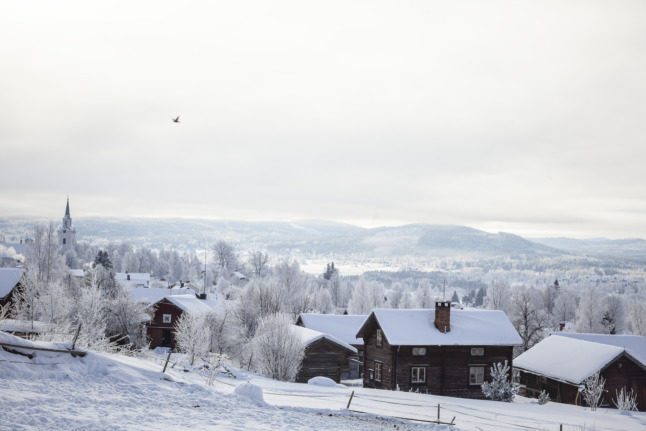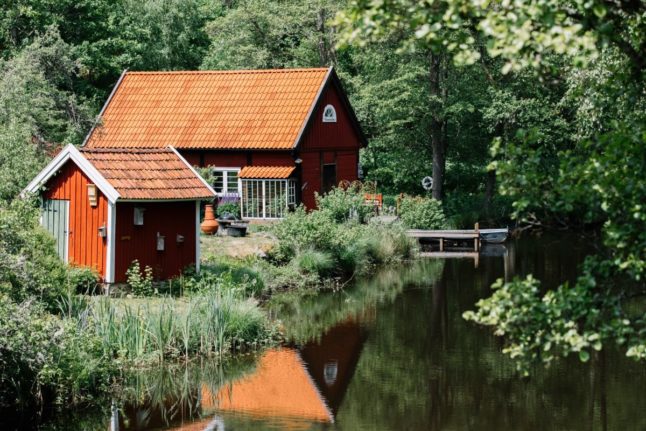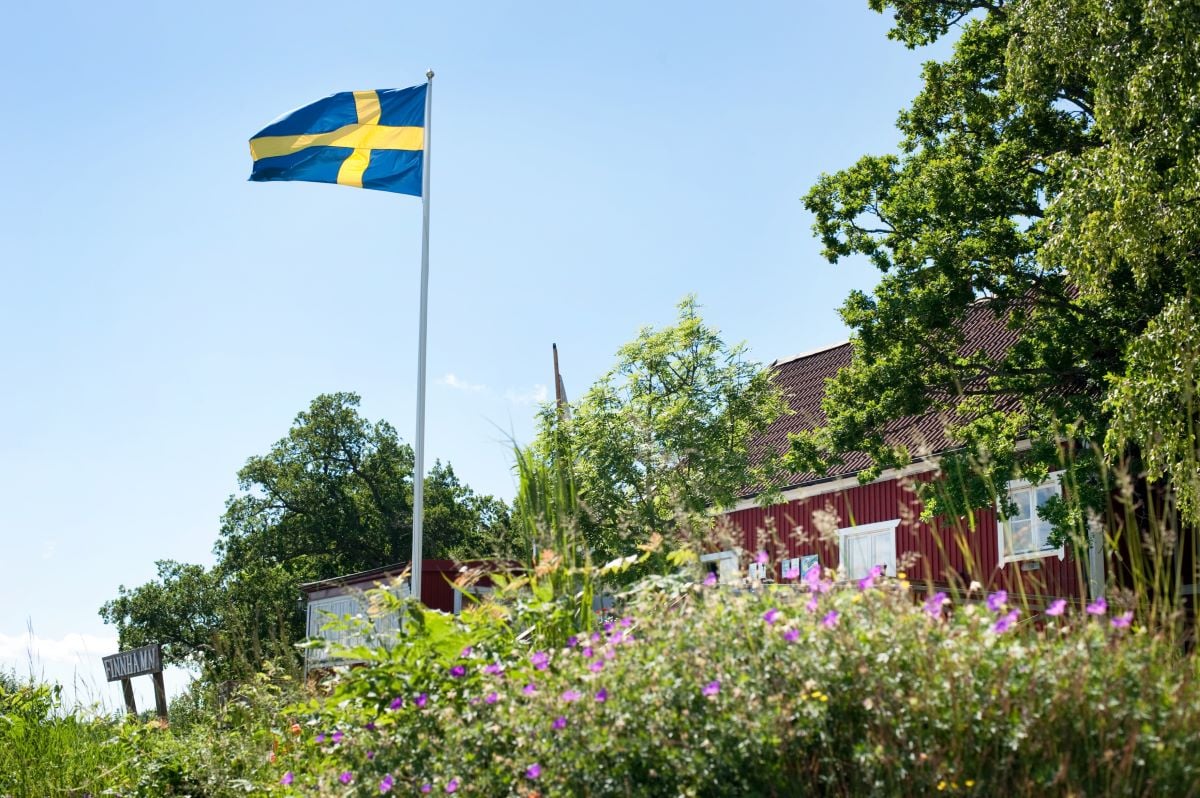When we asked The Local’s readers for their best winter memories of this majestic region of mountains, lakes, and Swedish wildlife, you had plenty to say. “There are many places in the world that I love but Dalarna stole my heart completely,” Mirka Mati, from Slovakia, told us. Ready to pack your bags? Thought so! But first, here are 16 fun things to do once you get there.
Discover all that Dalarna has to offer to make the most of this winter in Sweden
1. Go cross-country skiing
Cross-country skiing is a perfect way to discover Dalarna’s mountains – and it’s easier than you might think! Grövelsjön in the north of Dalarna offers some of Sweden’s finest cross-country skiing, whether on marked trails or by choosing to make your own tracks across pristine snow. Stay in a cosy cottage, a hostel or a four-star hotel – then get up for a hearty breakfast and set off once more.
2. Skate on natural ice
One of the joy’s of Sweden’s big freeze is the opportunity to safely undertake fun activities on natural ice. With over 70 km of ploughed courses, the Skating Dalarna network can satisfy both novice outdoor skaters and experienced enthusiasts. Check out the wide choice of locations around Dalarna, ice reports and more.
3. Cook over an open fire
Outdoor cooking is a quintessential Swedish experience. Do it fearlessly in winter to be even more like a local! Maybe you just want to grill some sausages on a break from cross-country skiing? Or perhaps you fancy a luxurious outdoor meal with friends after preparing all the ingredients at home? Dig a snow pit, so you can unwind and enjoy the crackling of the fire as the food cooks.
4. Go hiking
Lace up your winter boots and grab your backpack! Many of Dalarna’s finest walking trails are open in winter. Once you hear the snow creaking under your feet as you breathe in pure mountain air, you’ll know you made a good decision. You’re also spoilt for choice as Dalarna has over 360 nature reserves to explore.
5. Just switch off
After a busy year, wouldn’t it be nice to just switch off? “I usually tell people who travel to Sweden to see Stockholm to stay a little longer and visit Dalarna as it has this different vibe where you can relax your mind,” says Mirka, who lived in Dalarna in 2013, and still returns frequently. She recommends “just wandering in the forest or enjoying calm days at Bojsen beach [in Falun] or Lake Siljan”.
6. Enjoy a sauna (but earn it with an icy dip!)
A sauna can work wonders. But it’s no longer enough. To take things to another level for body, mind and spirit, take a winter dip first. If you’ve thought about it but never found the time (or courage?), you’ll have no excuses once you’re in Dalarna with its many lakes. Just make sure you have a companion to be safe – and keep thinking of that wonderful hot sauna!
7. Go walking in snowshoes
Fulufjället National Park outside Särna is spectacular all year but has a special magic in winter. Don’t miss the ice art works that form when Sweden’s highest waterfall Njupeskär freezes! Walking in snowshoes is a great fun for both children and adults – and a novel way to reach areas you’d otherwise miss. Snowshoe hiking is offered for all levels at Yttermalungs camping and Green Owl Travel in Rättvik.
8. Take a summit tour
At Bjursås Skicenter in Falun Municipality, you can sign up for a summit morning – heading up the mountain before the ski lifts open. A guide leads the activity, so you don’t need any prior knowledge, and the tour ends with breakfast – at the top while taking in the views as long as the weather allows!
9. Follow the pack – try dog sledding
Ready for an unforgettable experience that you’ll only find in a handful of locations globally? Various places in the northern part of Dalarna offer dogsled tours. Watch the fabulous scenery rush by as you’re pulled along by a powerful pack of huskies. Exhilarating!
10. Join a snowmobile ‘safari’
Another great option for those who want to feel their pulse racing. You’ll find various places where you can rent a snowmobile in Dalarna’s north and join a guided snowmobile ‘safari’ to give you an adventurous experience of the Swedish wilderness.
11. Find your spark with a kicksled
Kicksledding is another popular winter activity in Dalarna and you can borrow a kicksled (also known as spark) at a number of hotels. But wait: what exactly is it? This is a small sled, with a chair mounted on metal runners, that you propel by kicking the ground with your foot. Got it? Off you go then!
12. Lap up the Christmas magic
You’ll need to plan your trip soon to enjoy this one – but it’ll be worth it. Michael Bryant, originally from the UK and now based in Gothenburg, can still feel the magic of a Christmas spent skiing and staying in a log cabin in Dalarna over 20 years ago. “The smell of the fire, the snow-capped cabins, and the evening lights glistening in the thick snow,” he recalls. “It was the truest Christmas feeling I’ve ever had.”
13. Go ice fishing
Once thick ice settles on Dalarna’s lakes, how about some fishing for perch, pike, trout and rainbow trout? You need an ice drill, fishing equipment, a valid fishing licence, and a safety-conscious attitude: check the ice, bring ice studs and dress appropriately. Need help? Book a guided ice fishing tour at Anglerman Fishing Adventures in Älvdalen or Rösjöstugorna by Fulufjället.
14. Meet the reindeer
Reindeer walk and graze freely in the countryside around Idre and Grövelsjön in northern Dalarna. Idre is home to Sweden’s southernmost Sami village and an ideal place to experience and learn about Sami culture. Want to be sure of meeting these enchanting creatures? Sign up for reindeer experiences at Renbiten, a Sami family business in the area.
15. Stroll through a historic town
If you prefer a gentle stroll to a vigorous hike, towns such as Falun – a World Heritage Site thanks to its mining history – and Rättvik are great choices. “I fell in love with Dalarna, and especially Falun, because it reminds me of my hometown in Slovakia,” says Mirka. “A mountainous region full of ski resorts, lakes, and untouched nature.”
16. Go spring skiing
Well, ok, you might argue that this shouldn’t be on a winter list. But in Dalarna, the ski season is long and the spring conditions are often fantastic. If you’re not sure when you’ll get away, this is an option to keep in mind! Check out the list of Dalarna’s top resorts for Alpine skiing.






 Please whitelist us to continue reading.
Please whitelist us to continue reading.
Member comments